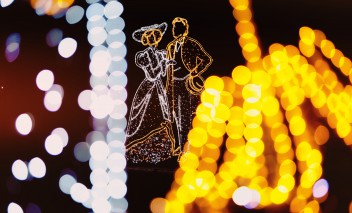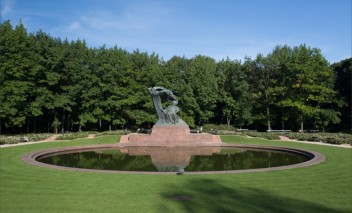Exhibition of One Painting. "Portrait of a Patrician Family"

From 4 August to 30 November 2017, the Exhibition of One Painting will feature a masterpiece, "Portrait of a Patrician Family" by Abraham van den Tempel. The painting comes from the collection of Hamburger Kunsthalle, one of the largest public art museums in Germany.
The "Portrait of a Patrician Family" is presented on the Exhibition of one Painting as a result of the cooperation of the Royal Łazienki Museum with Hamburger Kunsthalle and the Embassy of the Federal Republic of Germany.
Paintings by Dutch Masters
The collections of Hamburger Kunsthalle include works of painting, drawing, and sculpting from periods ranging from the Middle Ages up until the 21st century. They are divided into five sections: Collection of Old Masters, Nineteenth Century Art Collection, Modern Art Collection, Contemporary Art Collection, as well as the department of Prints and Drawings.
Within the core of the Hamburg collection of early paintings are works by Dutch masters of the Golden Age, including Rembrandt, Pieter de Hooch, Gerrit van Honthorst and Abraham van den Tempel, whose "Portrait of a Patrician Family" was among the first acquisitions of the Hamburg gallery.
Family Pride and Harmony
The "Portrait of a Patrician Family" (1672) depicts a scene taking place on stone tiles of a terrace surrounded with a balustrade, behind which, to the left, is a Classical palace building. To the right, in the background, is a view of a park or large garden with pathways shaded with a wooden pergola and tree crowns shown against the background of a clouded sky, with the yellow light of the setting sun shining through between the clouds.
In accordance with the rule applied in the 17th century paintings of couples, reflecting the traditional hierarchy, the father of the family sits in the privileged place, on the right hand side of his wife. He is dressed in a black costume with a white collar. The man’s body language indicates pride and self confidence – he sits in the chair firmly, with legs crossed, holding his side with his left hand and supporting his right arm on the high armrest. His wife, wearing a black bonnet on the modestly tied hair and a light-coloured gown covered with a black shawl, holds its folds with her left hand, and a ripe peach in her right hand. She took it from a basket held up by a teenage girl dressed in an elegant satin gown, according to the contemporary fashion. The girl’s neck is adorned with a pearl necklace, and her ears – with dormeuse pearl earrings.
Behind the man’s back is a column with a suspended curtain – a traditional accessory used in portraits of rulers and people of noble birth; it renders the scene official, almost ceremonial, and so does the framing of the subjects in full figure, from below (di sotto in su), as if they were looking at us slightly from above. The portrait is supposed to emphasize the high status of the depicted family. It is posing against the background of a palace which might be situated outside the city. For the wealthy Dutch bourgeoise aspiring to the lifestyle of nobility and aristocracy, being an owner of rural land was not only a proof of financial success, but also a sign of being part of the social elite. The composition, as it is characteristic of many portraits depicting members of the wealthy bourgeoise, is unostentatious; the scenery and costumes worn by the subjects are characterized by moderation and restraint.
The painting by Abraham van den Tempel is an image of family harmony and parental pride. Among important elements of the depiction are the peach fruits – they form a colourful detail that enlivens the whole image, and are a vehicle of hidden meanings. The peach that the woman holds in her elevated hand, as if presenting it to the viewer – in the polysemic, symbolic language of Dutch painting – could signify the feminine element: fertility, marriage, innocence, but also the choice between good and evil. The fruit also had negative connotations linked with desire (the soft flesh and hard pit); this is how the meaning of peaches in some still life paintings can be interpreted. In the case of the portrait in question, the peaches are likely to have a more general symbolic meaning. Fruits, e.g. grapes, apples, pears, quinces – are an ever-present motif in 17th century Dutch depictions of children in family pictures, associated with parenthood and care for one’s offspring.
The identity of subjects depicted by Abraham van den Tempel remains unknown.





